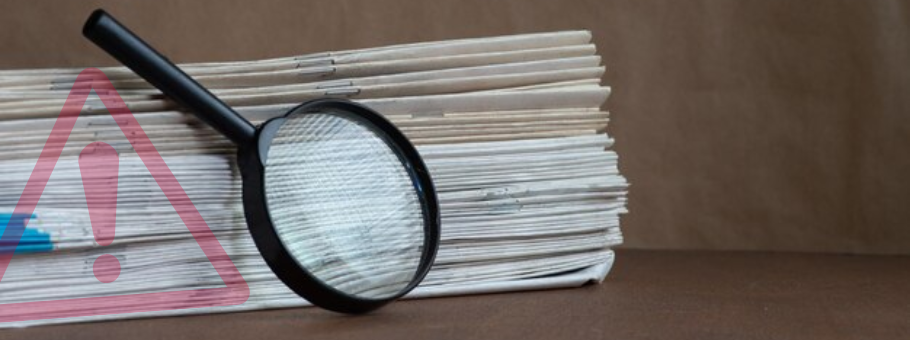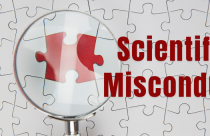Paper Mills- A Rising Concern in the Academic Community

This article is also available in Japanese
A good publishing record is one of the essential criteria for promotion, tenure, and grant acquisition for future projects. The pressure to publish more papers drives researchers towards unethical practices such as purchasing fictitious research papers. Academic frauds including data falsification, image manipulation, fabricated peer review have plagued the research publishing landscape for years together! The research community is working hard to maintain research integrity. Despite strict measures and vigilance, research misconduct and academic foul play has been discovered in manuscripts accepted by publishing powerhouses such as the Nature Publishing Group, Wiley, Taylor & Francis, etc. In addition to concerns related to plagiarism, ethical issues, and authorship disputes, the scientific community is now bracing to fight against the act of systematic manipulation of manuscripts by “paper mills”.
What is a Paper Mill?
Paper Mill is a potentially illegal organization that produces and sells fraudulent scientific manuscripts written by ghostwriters on demand! Researchers who require publications for furthering their career or meeting institutional criteria for promotion buy publication ready manuscripts. The service is purely profit-oriented. Researchers pay hefty amounts for authorships on ready-to-submit manuscripts. Their potential clients include researchers who wish an easy way out to publish in international journals without actually engaging in research. Some of the paper mills might have actual laboratories that perform experiments and produce actual data and images. Further, several authors buy these data to use in different experiments.
Hallmarks of Paper Mill Generated Manuscripts
Peculiar characteristics of manuscripts produced by paper mills include a generic hypothesis and experimental strategies, textual and organizational resemblances, and images that reflect duplication or manipulation. Let us go through them one-by-one.
- Manuscripts produced using paper mills have a set template having unusual similarity of text. They may also contain phrases that are almost identical or have been phrased in an awkward manner. Consider the following sentences:
This study allowed us to have a better and in-depth understanding of the association between mutations in gene X and colon cancer risk.
B. This study assisted in having an in-depth and better understanding of the association between gene Y and cervical cancer risk.
Both these statements have minor variations in wording. Authors simply plug in names of different genes and diseases into appropriate positions.
- Although the images can be real photos of cells/tissues, gels, flow cytometry profiles, they are fabricated to suit the experimental requirements.
For examples, western blot images presented in paper mill-generated manuscripts inexplicably contain similar background patterns and peculiarly shaped bands. A similar background across images published in manifold manuscript suggests either computer generated or copy-pasted images from other sources. The gel images also lack stains, dots, or fine smears that are normally present in such images.
Guillaume Filion, a biologist at the Center for Genomic Regulation in Barcelona has claimed that several manuscripts report the use of ‘Beggers funnel plot’. It is a statistical test that does not exist. Furthermore, it is highly unlikely that multiple scientists working in different research labs independently invent the same name.
- They often have authors with non-institutional or personal email addresses.
- Manuscripts produced by paper mills provide very superficial explanations for methods or analyses used.
Concerns Associated with Identifying Manuscripts Produced by Paper Mills
- Spotting dubious manuscripts is not an easy task! Although several advanced tools such as iThenticate and PlagScan, that detect plagiarized text are available these days, tools that can detect plagiarized or fake data are not very common. On their own, these manuscripts appear legitimate, common patterns and shared features come to light only when editors compare multiple papers authored by different researchers with nothing in common.
- Journals’ editors may request for raw data if they are suspicious about a manuscript. However, checking data credibility is not straightforward, especially if analysis of data files requires specialist software. This process can be time consuming and expensive. In addition, it may be difficult to find out if the data is manipulated until you are an expert in that field. For instance, to judge whether a flow cytometry file has been made-up, you have to be a flow cytometry expert.
- Tracking correspondence can be problematic because it is uncertain whether the editors are approaching original authors or paper mill representatives.
Approaches to Detect Manuscripts Generated by Paper Mills
Editors and reviewers have become highly vigilant about submissions that are churned out of paper mills. An extensive investigation by RSC Advances led to retraction of about 68 articles on the grounds of falsified research. Following are the various means used to ensure no foul play is involved.
- Editors may request the authors to submit raw data associated with manuscript results and images.
- Reviewers may verify the identities of chemicals and reagents. They may also check for fully disclosed identities.
- Reviewers would check for valid study hypothesis and experiments drafted in accordance with study hypothesis.
What Should Researchers Do to Boost Journals’ Confidence in Their Manuscripts?
- Researchers must fully declare all the externally provided research results, if the experiments have been outsourced.
- Completely disclose the identities of all the raw materials, chemicals and reagents used in the study.
- Provide supplemental original source files (raw data/ individual data points) in a readable format.
- Authors may declare in the “Author’s Contributions” section that all the data were generated in their own laboratories using fair means and no paper mill was used.
As researchers would you only be concerned about increasing your publication count even at the cost of losing authenticity of papers? Wouldn’t citing of such papers mislead other researchers to falsified results and eventually hamper the growth of scholastic reasoning in science? Please let us know your thoughts on this in the comments section below. You can also visit our Q&A forum for frequently asked questions related to other unethical practices and how to avoid them to enhance your publishing record answered by our team that comprises subject-matter experts, eminent researchers, and publication experts.









